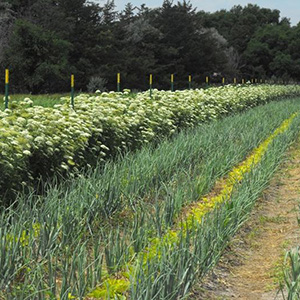
The history of the biodynamic seed movement in Europe can serve as a model and stimulus for development of Biodynamic seeds in America. The Development of a biodynamic seed supply in Europe was established over a generation ago through a great deal of initiative, collaborative effort, and support. In 1985, the Initiative Circle for Vegetable Seeds from Biodynamic Farming formed as a result of a workshop held at the Bingenheim social therapeutic farming community and was established there in 1987. In order to separate plant breeding from commercial activities they formed a non-profit organization, Kultursaat, in 1994 to raise funds and coordinate their plant breeding activities. In 2001 Bingenheimer Saatgut AG, was formally incorporated as a limited company formed to contract farmers to multiply the varieties developed by the breeders of Kultursaat together with other open-pollinated vegetable varieties suitable for organic growers. The shareholders of the company include the Kultursaat breeders and seed producers. By 2004 they were producing and distributing a very large and full selection of vegetable crops and varieties and erected a large state of the art seed cleaning, testing, processing and handling facility. In 2007 Kultursaat started a gene bank for the collection and in situ maintenance of OP’s co-funded by the German government. The purpose of this workshop is to develop a North American branch of the Initiative Circle and to consider how Biodynamic/organic producers might become part of the growers and breeders network of Sativa and Bingenheim and participate in breeding and production for the benefit of both the European and American Biodynamic seed development. This would strengthen international cooperation and could provide proficient, economic and readily available access for both the wholesale and retail market to the varieties coming out of biodynamic breeding and production, with open lines of communication and clear agreements between breeders, growers, and multipliers on the two continents.